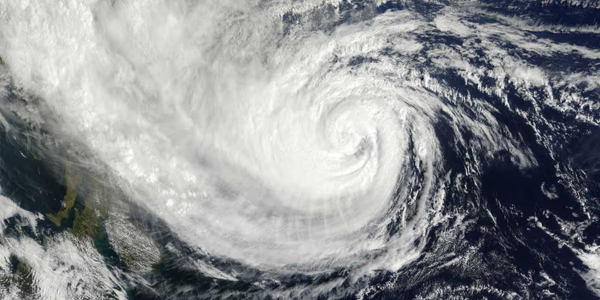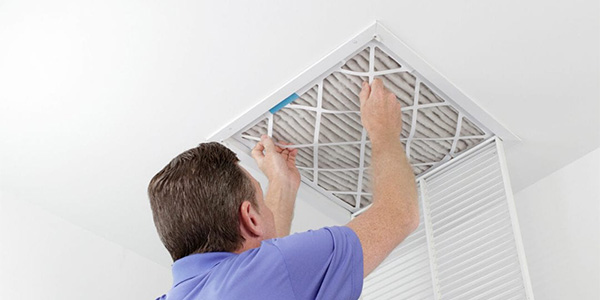10 steps to prepare your property for hurricane season
July 12, 2025 at 6:00 a.m.By Corey Construction.
Use the following guide to anticipate the before and after of a hurricane or major storm.
Every year from mid-summer through the fall, hurricanes pose a serious threat to Texas and the Atlantic Coast. Bringing intense rainfall, powerful winds, tornadoes and dangerous storm surges, hurricanes can cause severe damage across coastal and inland regions.
With material shortages and construction delays unceasing in the industry, it is vital to prepare your property well in advance to withstand these extreme seasons. Corey Construction Commercial Services is here to help you protect your property before the next storm hits.
The 2025 Atlantic hurricane season is predicted to be above average, with forecasts estimating 17 named storms, including nine hurricanes and four major hurricanes, according to Colorado State University. This is consistent with predictions from other weather sources, including The Weather Company and AccuWeather. The increased activity is partly due to warmer-than-average sea surface temperatures in the Atlantic.
Hurricanes and heavy storms may cause:
- Complete or partial roof blow-offs
- Seam failure or membrane separation
- Minor or major leaks
- Missing shingles, fascia and/or flashing
- Standing or pooling water
- Tears or holes from debris or mechanical equipment
- Blocked drains, gutters and downspouts from debris
- Damage to skylights
Now is the time to prepare and protect your commercial roof, as well as what is inside the facility. While the best option is always to contact a licensed commercial roof company, our roofing experts have put together a guide to help you prepare your roof for the next major storm.
Before a hurricane or major storm
1 - Schedule a roof inspection.
The first step in your hurricane preparedness plan should be scheduling a comprehensive roof inspection with an experienced commercial roofing company. It is important to identify potential problems and weak points on your roof that may need maintenance or repair to increase overall performance during the storm. A condition report prior to the storm may be helpful if you end up filing an insurance claim.
2 - Have a preventative maintenance plan in place.
Following a consistent and thorough preventative maintenance plan that follows sound inspection procedures can be the difference between a roof that perseveres during a major hurricane vs. one that fails with small amounts of rain.
3 - Complete any necessary repairs and maintenance.
Don’t put off performing repairs now to fix common issues like damage to the membrane, flashings, sealants and drainage systems.
4 - Make sure that all mechanical equipment such as HVAC, ventilation and electrical are secured.
A great deal of damage we see following a hurricane is due to loose HVAC equipment rolling across the membrane. Ensure hurricane straps and other protective measures are in place.
5 - Keep your drains and gutters clean.
Standing water can damage your roof and in high amounts can even cause a roof failure. Clear all gutters, downspouts and drains of debris that can cause a blockage.
6 - Remove all unnecessary items from the roof.
Flying debris is a common threat during hurricanes. Remove or secure all loose items that could be dangerous to others during a storm.
7 - Secure or cover skylights.
Consult your roofing contractor and implement necessary modifications to prevent skylight damage during hurricanes. Skylights are a common source of leaks. If your skylights are not needed, we can assist with removing them.
8 - Trim landscaping.
Trim trees and bushes within 3 feet of the building to minimize potential damage to your roof.
9 - Take pictures of your roof.
Be sure to take pictures of your roof from all angles to capture its pre-storm condition. This will make any possible insurance claims easier.
10 - Schedule a post-storm inspection.
Due to high demand, scheduling the inspection with your roofing contractor ahead of time may help you accelerate the process and ensure your roof will be taken care of quickly following the storm.
After a hurricane or major storm
1 - Inspect your roof for damage.
A thorough inspection following a hurricane or major storm is crucial, as your roof may have suffered significant damage. Inspect the roof for leaks both inside and outside the building. It is also important to pay special attention to air vents, flashing, seams, joints and mechanical equipment.
2 - Document any damages.
Be careful to document and take pictures of damages that occurred as a result of the storm. You will probably need to share this with your insurance provider.
3 - Contact your insurance provider.
Contact your insurance company as soon as you’ve discovered the damage to your roof.
4 - Schedule service and repairs.
Contact your trusted commercial roofing company to repair or service your roof. If you wait too long, a leak or minor issue can lead to more significant problems.
5 - Continue to utilize a service and maintenance program for your roof.
Utilizing a consistent preventative maintenance program is the key protecting your investment and extending the life of your roof.
As unpredictable as Mother Nature can be, building owners, property managers and business owners have to stay diligent when it comes to preparing for hurricanes, storms and inclement weather. Your commercial roofing system is one of the most critical elements in protecting your property. Hurricane season is officially here and contractors are ready to help you get prepared.
Original article source: Corey Construction
Disclaimer: The information provided on AskARoofer.com or information sent by emails is the opinion of the writers. It is the responsibility of the reader to check for accuracy in one's own jurisdiction, as there are different codes and restrictions for different parts of the country. AskARoofer.com does not accept any liability for the use of information on this website or email. AskARoofer.com has no controls over product failures, installation, or climate conditions that may change the roofing process in your area. Our information is in general to our area and cannot be the same as your local town or state. It is advised to seek the local Building Department, Licensed Contractor and local Product Representative for proper installation requirements and code enforcement when installing a new roof.
Have a question? AskARoofer.
Find your local roofing contractor in the AskARoofer™ Contractor Directory.














Comments
Leave a Reply
Have an account? Login to leave a comment!
Sign In